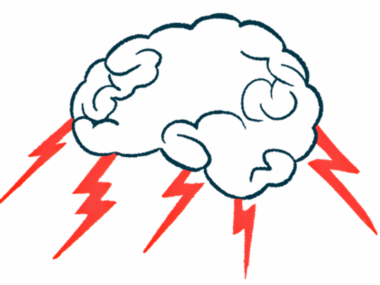Older Age and Motor Symptom Severity Tied to Fall Risk After DBS
Parkinson's patients followed for up to 15 years after deep brain stimulation
Written by |

Older age at onset, more severe motor symptoms, and cognitive impairment are risk factors for the progression of gait and postural instability in Parkinson’s disease patients who undergo deep brain stimulation, a new study suggests.
Researchers, who followed patients for up to 15 years after the surgery, found a higher risk of falls in those whose symptoms started at older ages, and had longer disease duration and worse motor symptoms prior to the intervention. People whose Parkinson’s is characterized by slowness in initiating movements and rigidity were also at greater risk.
“Overall, axial [motor] signs progressively worsened over the long-term period following [deep brain stimulation], likely related to the progression of [Parkinson’s disease], especially in a subgroup of subjects with specific risk factors,” the team wrote.
The study, “Axial impairment and falls in Parkinson’s disease: 15 years of subthalamic deep brain stimulation,” was published in the npj Parkinson’s disease.
Subthalamic nucleus deep brain stimulation (DBS) is given to ease motor symptoms with advanced Parkinson’s, and its positive effects are known to be largely maintained as progression continues. However, symptoms such as axial impairment (gait, posture, and balance disorders) and falls are resistant to medical and surgical treatments, representing a high burden for patients and a challenge to those caring for them.
“A definite consensus concerning the evolution of axial impairment and falls in people with [Parkinson’s] after [subthalamic nucleus deep brain stimulation] surgery is still absent,” the researchers, led by a team in France, noted.
302 study patients given deep brain stimulation between 1993 and 2010
The scientists analyzed data on axial impairment and fall frequency in 302 patients — 183 men and 119 women — followed at the Grenoble Alpes University Hospital. All underwent bilateral subthalamic deep brain stimulation surgery there between 1993 and 2010.
Their mean age at the study’s start (baseline) was 55.61, and they had been living with Parkinson’s for a mean of 11.75 years. Sixteen people at baseline (5.3%) were identified as frequent fallers.
All were evaluated before surgery and again one year later, with 102 patients being followed up to 10 years after the procedure, and 57 patients evaluated 15 years later.
Gait, posture, and balance parameters (axial scores) were similar at baseline and the one-year follow-up, but they progressively worsened at 10 and 15 years after surgery.
Specifically, patients’ axial scores during “on periods” with levodopa — a standard Parkinson’s treatment — increased from 1.97 at one year post-surgery to 6.11 at 10 years and 7.39 at 15 years. Those identified as frequent fallers likewise rose, from 28 people (9.6% of 292 patients) at one year to 35 (36.1% of 97 patients) at 10 years and 19 (37.3% of 51 patients) at 15 years post-DBS.
Axial scores were determined “as the sum of specific items” in Part III of the Unified Parkinson’s Disease Rating Scale (UPDRS), those that “directly referred to static and dynamic postural control” but not facial expression or speech, the study noted. Fall frequency was measured using item 13 of the UPDRS Part II, falls with freezing of gait, referring to the inability to lift a foot and take a step.
The progressive motor function decline seen over time is likely the result of Parkinson’s natural progression, “as reported in non-operated patients,” the researchers wrote, and is in line with findings of similar studies “with shorter follow-ups.”
Risk factors should be considered before DBS surgery, researchers note
A multivariate analysis — one looking at the relationship between several variables — identified greater axial disability before surgery, cognitive impairment (particularly in executive abilities associated with the frontal part of the brain), and older age at disease onset as risk factors for the worsening of motor functions after deep brain stimulation surgery.
Of note, “higher frontal abilities may act as a protective factor for axial impairment progression in people with [Parkinson’s disease] and [deep brain stimulation],” the researchers wrote, a finding that confirms the “well-known impact of cognitive functions, primarily concerning frontal executive abilities, on balance and gait.”
Based on these results, the team emphasized a “need for strict selection criteria when considering [subthalamic nucleus deep brain stimulation] in people with [Parkinson’s] by including those with preserved executive abilities to maximize the opportunity for long-term benefits after surgery.”
Identified risk factors for frequent falls after surgery were the degree of motor (axial) disability before the surgery, patients with a type of Parkinson’s characterized by slowness in initiating movements and rigidity (akinetic/rigid), older age at onset, and longer disease duration at the time of surgery.
Limited motor function and the disease’s akinetic/rigid form of are also predictors of falls in patients on medical treatment, suggesting that the “pathophysiological mechanisms underlying falls are unrelated to [deep brain stimulation surgery]” with Parkinson’s, the researchers wrote.
Considering that older patients usually show faster disease progression and a higher risk of falling, “particular care should be taken when considering surgery for older individuals and prudently analyze the benefits-to-risks ratio,” the team added, noting that “no specific age cut-off has been defined” for subthalamic DBS.
Given the association between longer disease duration and motor symptom severity, likely related to increasing fall frequency, the researchers suggested that deep brain stimulation surgery might be more beneficial to patients with less advanced disease.
Overall, “in the selection procedures for [subthalamic deep brain stimulation], it would be relevant to consider these factors to provide patients and their caregivers with reasonable prognostic information and maximize the long-term outcomes of candidates for surgery,” the scientists concluded.





